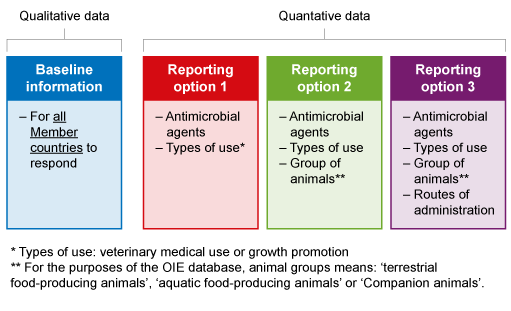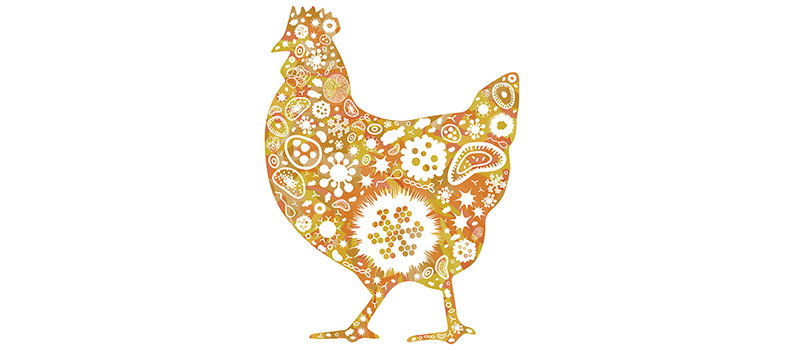5.2 Global database on the use of antimicrobials in animals
The OIE has built a global database on the use of antimicrobial agents in animals. The survey aims to collect harmonised quantitative data on AMU in animals at a national level from all Member Countries. The OIE survey template used to collect data is designed to allow all countries to participate, regardless of whether a national data collection system currently exists. The survey is split into two sections, the first collect base-line information about a Member Country’s current situation concerning regulations etc., while the second section seeks quantitative data (Figure 11).

Show description|Hide descriptionThe infographic shows four coloured boxes. Far left, headed ‘Baseline Information’ and an indicator showing this is the area of qualitative data, shows that all Member Countries should participate in order to achieve the best results. The other three boxes are linked to represent the area of quantitative data. Each box is headed with a ‘Reporting Option’ with, below, what this entails. Reporting Option 1 includes antimicrobial agents and type of use (a footnote explains that this means either veterinary medical use or growth promotion). Reporting Option 2 is the same as Option 1 but includes the groups of animals (a footnote explains that this is means ‘terrestrial food-producing animals’, ‘aquatic food-producing animals’ or ‘Companion animals’). Reporting Option 3 is the same as 2 but includes ‘Routes of administration’. This OIE survey aims to collect harmonised quantitative data on AMU in animals at a national level from all Member Countries. The survey template used to collect the data is designed to allow all countries to participate, regardless of whether a national data collection system currently exists.
The first annual data collection on antimicrobial agents in animals in OIE Member Countries commenced in 2015, with the most recent report published in 2020. Each year, more member countries participate in the survey. If you would like to read more about the reports, you can find them on the OIE website.




